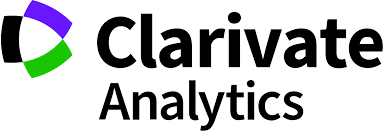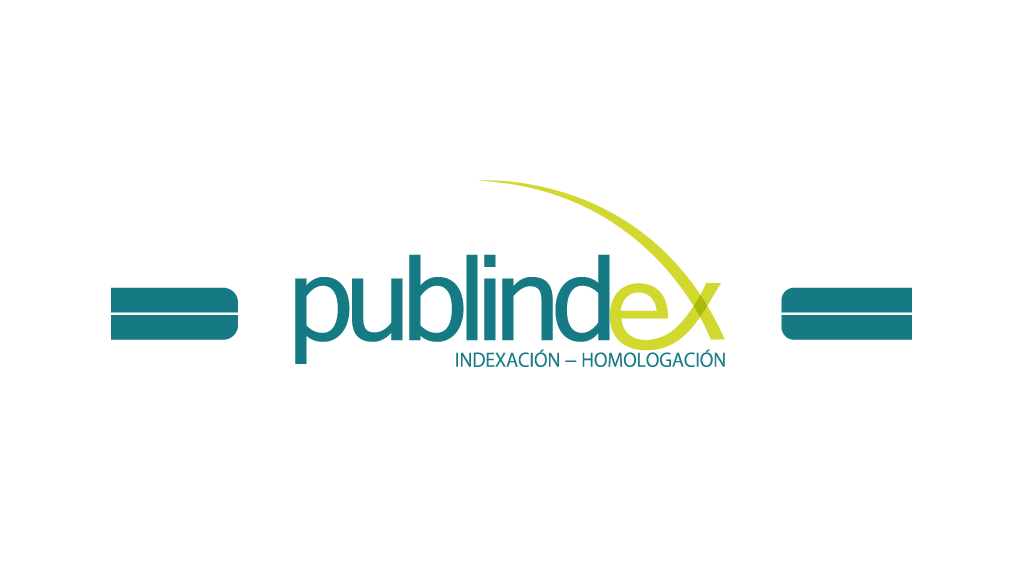
This work is licensed under a Creative Commons Attribution-NonCommercial-ShareAlike 4.0 International License.
Authors who publish in this journal agree to the following terms:
Acta Colombiana de Psicología complies with international intellectual property and copyright laws, and particularly with Article No. 58 of the Political Constitution of Colombia, Law No. 23 of 1982, and the Agreement No. 172 of September 30, 2010 (Universidad Católica de Colombia Intellectual Property Regulation).
Authors retain their copyright and grant to the Acta Colombiana de Psicología the right of first publication, with the work registered under Creative Commons attribution license, which allows third parties to use the published material, provided they credit the authorship of the work and the first publication in this Journal.
Abstract
The Subjective Well-Being Scale (EBS-20) and its short version (EBS-8) were developed and validated to measure life satisfaction and positive affect in a Spanish-speaking population. The aim of the present study was to obtain additional evidence of validity for the EBS-8. To this end, the scale was applied in three successive studies to a total of 2259 Mexicans aged 12 to 81 years. The results of the first study allowed us to confirm its unifactorial structure (CMIN/DF = 2.336; CFI = .996; RMSEA = .047) and its adequate reliability (α = .958, ω = .957); in the second its measurement invariance by sex, social group and age was tested (Δχ2 p >. 05, ΔCFI < .004, ΔRMSEA < .014); and in the third study it was found, by calibrating its items under IRT, that the scale satisfactorily estimates the construct assessed (a > 1.69; b1 between -2.78 and -2.35). From the psychometric indices obtained, it is concluded that the EBS-8 is an excellent brief instrument constructed in Spanish to assess subjective well-being in adolescents, young people, adults and older adults.

References
Arias, W., Huamani, J., & Caycho-Rodríguez, T. (2018). Satisfaction with life in high school students from the city of Arequipa. Propósitos y Representaciones, 6(1), 351-407. https://doi.org/10.20511/pyr2018.v6n1.206
Atienza, F. L., Pons, D., Balaguer, I., & García-Merita, M. (2000). Propiedades psicométricas de la Escala de Satisfacción con la Vida en adolescentes. Psicothema, 12(2), 314-319. http://www.psicothema.com/pdf/296.
Ato, M., López, J. J., & Benavente, A. (2013). Un sistema de clasificación de los diseños de investigación en psicología. Anales de Psicología, 29(3), 1038-1059. https://doi. org/10.6018/analesps.29.3.178511
Baker, F. B. (2001). The basics of Item Response Theory. ERIC Clearinghouse on Assessment and Evaluation. https:// files.eric.ed.gov/fulltext/ED458219.pdf
Bentler, P. M. (2004). EQS 6: Structural equation program manual. Multivariate Software. Bollen, K. A. (1989). Structural equations with latent variables.
John Wiley & Sons. Browne, M. W., & Cudeck, R. (1992). Alternative ways of assessing model fit. Sociological Methods & Research, 21(2), 230-258. https://doi. org/10.1177/0049124192021002005
Calleja, N., Candelario Mosco, B. J., Rosas Medina, J. H., & Souza Colín, E. (2020). Equivalencia psicométrica de las aplicaciones impresas y electrónicas de tres escalas psicosociales. Revista Argentina de Ciencias del Comportamiento, 12(2), 50-58. https://doi. org/10.32348/1852.4206.v12.n2.25284
Calleja, N., & Mason, T. A. (2020). Escala de Bienestar Subjetivo (EBS-20 y EBS-8): Construcción y validación. Revista Iberoamericana de Diagnóstico y Evaluación Psicológica e Avaliação Psicológica, RIDEP, 55(2), 185- 201. https://doi.org/10.21865/RIDEP55.2.14
Cantor Parra, L. S., & Clavijo Benavides, M. P. (2020). Adaptación y validación de la escala de afectividad positiva y negativa (PANAS) al contexto colombiano, en una muestra de madres solteras en la ciudad de Bogotá, Colombia (Tesis de grado). Fundación Universitaria Los libertadores, Bogotá, Colombia. https://hdl.handle.net/11371/2912
Cantril, H. (1965). The pattern of human concern. Rutgers University Press.
Casas, F., Fernández-Artamendi, S., Montserrat, C., Bravo, A., Bertrán, I., & Del Valle, J. F. (2013). El bienestar subjetivo en la adolescencia: Estudio comparativo de dos Comunidades Autónomas en España. Anales de Psicología, 29(1), 148-158. https://dx.doi.org/10.6018/ analesps.29.1.145281
Castellá Sarriera, J., Saforcada, E., Tonon, G., Rodríguez de La Vega, L., Mozobancyk, S., & Maria Bedin, L. (2012). Bienestar subjetivo de los adolescentes: Un estudio comparativo entre Argentina y Brasil. Psychosocial Intervention, 21(3), 273-280. https://doi.org/10.5093/ in2012a24
Caycho, T. (2017). Importancia del análisis de invarianza factorial en estudios comparativos en Ciencias de la Salud. Revista Cubana de Educación Médica Superior, 31(2), 1-3. https://www.medigraphic.com/pdfs/educa cion/cem-2017/cem172d.pdf
Checa, I., Perales, J., & Espejo, B. (2019). Measurement invariance of the Satisfaction with Life Scale by gender, age, marital status and educational level. Quality of Life Research, 28(4), 963-968. https://doi.org/10.1007/ s11136-018-2066-2
Chen, F. F., Sousa, K. H., & West, S. G. (2005). Teacher’s corner: Testing measurement invariance of second-order factor models. Structural Equation Modeling: A Multidisciplinary Journal, 12(3), 471-492. https://doi. org/10.1207/s15328007sem1203_7
Cheung, G. W., & Rensvold, R. B. (2002). Evaluating goodness-of-fit indexes for testing measurement invariance. Structural Equation Modeling: A Multidisciplinary Journal, 9(2), 233-255. https://doi.org/10.1207/ S15328007SEM0902_5
Cuadra, H., & Florenzano, R. (2003). El bienestar subjetivo: Hacia una psicología positiva. Revista de Psicología, 12(1), 83-96. https://doi.org/10.5354/0719-0581.2003.17380
Determann, D., Lambooij, M., Steyerberg, E., Bekker-Grob, E., & Ardine de Wit, G. (2017). Impact of survey administration mode on the results of a health-related discrete choice experiment: Online and paper comparison. Value in Health, 20(7), 953-960. https://doi.org/10.1016/j. jval.2017.02.007
Diener, E. D., Emmons, R. A., Larsen, R. J., & Griffin, S. (1985). The Satisfaction with Life Scale. Journal of Personality Assessment, 49(1), 71-75. https://doi. org/10.1207/s15327752jpa4901_13
Diener, E., Lucas, R. E., & Oishi, S. (2018). Advances and open questions in the science of subjective well-being. Collabra: Psychology, 4(1), 1-78. https://doi.org/10.1525 /collabra.115
Dimitrov, D. M. (2010). Testing for factorial invariance in the context of construct validation. Measurement and Evaluation in Counseling and Development, 43(2), 121- 149. https://doi.org/10.1177/0748175610373459
Ferrando, P. J., & Anguiano-Carrasco, C. (2010). El análisis factorial como técnica de investigación en psicología. Papeles del Psicólogo, 31(1), 18-33. http://www.pape lesdelpsicologo.es/pdf/1793.pdf
Flores-Kanter, P. E., Garrido, L. E., Moretti, L. S., & Medrano, L. A. (2021). A modern network approach to revisiting the Positive and Negative Affective Schedule (PANAS) construct validity. Journal of Clinical Psychology, 77(10), 2370-2404. https://doi.org/10.1002/jclp.23191
Flores-Kanter, P. E., & Medrano, L. A. (2018). Comparación de dos versiones reducidas de la Escala PANAS: Análisis factoriales en una muestra argentina. Revista Iberoamericana de Diagnóstico y Evaluación e Avaliação Psicológica, 49(4), 37-46. https://doi.org/10.21865/ RIDEP49.4.03
Fornell, C., & Larcker, D. F. (1981). Evaluating structural equation models with unobservable variables and measurement error. Journal of Marketing Research, 18(1), 39-50. https://doi.org/10.1177/002224378101800104
Furr, R. M. (2018). Psychometrics: An introduction (3. ª ed.). Sage
Gómez, V., Villegas de Posada, C., Barrera, F., & Cruz, J. E. (2007). Factores predictores de bienestar subjetivo en una muestra colombiana. Revista Latinoamericana de Psicología, 39(2), 311-325. https://www.redalyc.org/ pdf/805/80539208.pdf
Gutiérrez-Carmona, A., & Urzúa M., A. (2019). ¿Los valores culturales afectan el bienestar humano? Evidencias desde los reportes de investigación. Universitas Psychologica, 18(1), 1-12. https://doi.org/10.11144/Javeriana.upsy18- 1.vcab
Harding, S., Morris, R., Gunnell, D., Ford, T., Hollingworth, W., Tilling, K., Evans, R., Bell, S., Grey, J., Brockman, R., Campbell, R., Araya, R., Murphy, S., & Kidger, J. (2019). Is teachers’ mental health and wellbeing associated with students’ mental health and wellbeing? Journal of Affective Disorders, 242(19), 180-187. https://doi.org /10.1016/j.jad.2018.08.080
Hassan Butt, T., Abid, G., Arya, B., & Farooqi, S. (2020). Employee energy and subjective well-being: a moderated mediation model. The Service Industries Journal, 40(1-2), 133-157. https://doi.org/10.1080/02642069.2018.1563072
Hu, L., & Bentler, P. M. (1999). Cutoff criteria for fit indexes in covariance structure analysis: Conventional criteria versus new alternatives. Structural Equation Modeling: A Multidisciplinary Journal, 6(1), 1-55. https://doi. org/10.1080/10705519909540118
Keyes, C., Shmotkin, D., & Ryff, C. (2002). Optimizing well-being: the empirical encounter of two traditions. Journal of Personality and Social Psychology, 82(6), 1007- 1022. https://doi.org/10.1037//0022-3514.82.6.1007
Kushlev, K., Drummond, D. M., & Diener, E. (2020). Subjective Well-Being and Health Behaviors in 2.5 Million Americans. Applied Psychology: Health and Well-Being, 12(1), 166-187. https://doi.org/10.1111/ aphw.12178
Lapuente, L., Dominguez-Lara, S., Flores-Kanter, P. E., & Medrano, L. A. (2018). Estructura del bienestar subjetivo mediante análisis bifactor: ¿Unidimensional o multidimensional? Avaliação Psicológica, 17(2), 252-259. https://doi.org/10.15689/ap.2018.1702.14521.11
Levine, G. N., Cohen, B. E., Commodore-Mensah, Y., Fleury, J., Huffman, J. C., Khalid, U., Labarthe, D. R., Lavretsky, H., Michos, E. D., Spatz, E. S., Kubzansky, L. D., & American Heart Association Council on Clinical Cardiology; Council on Arteriosclerosis, Thrombosis and Vascular Biology; Council on Cardiovascular and Stroke Nursing; and Council on Lifestyle and Cardiometabolic Health. (2021). Psychological health, well-being, and the mind-heart-body connection: A scientific statement from the American Heart Association. Circulation, 143(10), e763-e783. https://doi.org/10.1161/CIR.000000000000 0947
McCullough, M. E., Emmons, R. A., & Tsang, J. A. (2002). The grateful disposition: A conceptual and empirical topography. Journal of Personality and Social Psychology, 82(1), 112-127. https://doi. org/10.1037/0022-3514.82.1.112
Medrano, L. A., Flores-Kanter, P. E., Trógolo, M., Curarello, A., & González, J. (2015). Adaptación de la Escala de Afecto Positivo y Negativo (PANAS) para la población de Estudiantes Universitarios de Córdoba. Anuario de Investigaciones de la Facultad de Psicología, 2(1), 22-36. https://revistas.unc.edu.ar/index.php/aifp/article/down load/12503/12773
Moksnes, U. K., Løhre, A., Byrne, D. G., & Haugan, G. (2014). Satisfaction with life scale in adolescents: Evaluation of factor structure and gender invariance in a Norwegian sample. Social Indicators Research, 118(2), 657-671. https://doi.org/10.1007/s11205-013-0451-3
Montero y López Lena, M. E. (1998). Soledad: Desarrollo y validación de un inventario multifacético para su medición (Tesis doctoral). Universidad Nacional Autónoma de México, México. http://132.248.9.195/pdbis/269524/ Index.html
Moral de la Rubia, J. (2011). La Escala de Afecto Positivo y Negativo (PANAS) en parejas casadas mexicanas Ciencia Ergo-Sum, 18(2), 117-125. https://cienciaergosum.uaemex.mx/article/view/740
Moyano Díaz, E., & Ramos Alvarado, N. (2007). Bienestar subjetivo: Midiendo satisfacción vital, felicidad y salud en población chilena de la Región Maule. Universum (Talca), 22(2), 177-193. https://doi.org/10.4067/ S0718-23762007000200012
Nima, A. A., Cloninger, K. M., Persson, B. N., Sikström, S., & Garcia, D. (2020). Validation of subjective well-being measures using Item Response Theory. Frontiers in Psychology, 10, 3036. https://doi.org/10.3389/ fpsyg.2019.03036
Padrós Blázquez, F., Gutiérrez Hernández, C. Y., & Medina Calvillo, M. A. (2015). Propiedades psicométricas de la Escala de Satisfacción con la Vida (SWLS) de Diener en población de Michoacán (México). Avances en Psicología Latinoamericana, 33(02), 223-232. https:// doi.org/10.12804/apl33.02.2015.04
Pavot, W. (2018). The cornerstone of research on subjective well-being: Valid assessment methodology. En E. Diener, S. Oishi y L. Tay (Eds.), Handbook of Well-Being. DEF Publishers. https://www.nobascholar.com/chapters/15/ download.pdf
Pedrosa, I., Celis-Atenas, K., Suárez-Álvarez, J., GarcíaCueto, E., & Muñiz, J. (2015). Cuestionario para la evaluación del optimismo: Fiabilidad y evidencias de validez. Terapia Psicológica, 33(2), 127-138. https://doi. org/10.4067/S0718-48082015000200007
Samejima, F. (1969). Estimation of latent ability using a response pattern of graded scores. Psychometrika Monographs, 34(Supl. 17). https://doi.org/10.1002/j.2333-8504.1968.tb00153.x
Simms, L. J. (2008). Classical and modern methods of psychological scale construction. Social and Personality Psychology Compass, 2(1), 414-433. https://doi. org/10.1111/j.1751-9004.2007.00044.x
Sociedad Mexicana de Psicología. (2010). Código ético del psicólogo (5. ª ed.). Trillas. Stöber, J., & Joormann, J. (2001). A short form of the Worry Domains Questionnaire: Construction and factorial validation. Personality and Individual Differences, 31(4), 591-598. https://doi.org/10.1016/ S0191-8869(00)00163-X
Temiz, G. (2020). The relationship between mothers’ psychological well-being and their attitudes towards their children. Psychology Research, 10(1), 1-9. https://doi. org/10.17265/2159-5542/2020.01.001
Tomás, J. M., Gutiérrez, M., Sancho, P., & Romero, I. (2015). Measurement invariance of the Satisfaction with Life Scale (SWLS) by gender and age in Angola. Personality and Individual Differences, 85, 182-186. https://doi.org/10.1016/j. paid.2015.05.008
Van de Schoot, R., Lugtig, P., & Hox, J. (2012). A checklist for testing measurement invariance. European Journal of Developmental Psychology, 9(4), 486-492. https://doi.or g/10.1080/17405629.2012.686740
Vandenberg, R., & Lance, C. (2000). A review and synthesis of the measurement invariance literature: Suggestions, practices, and recommendations for organizational research. Organizational Research Methods, 3(1), 4-70. https://doi.org/10.1177/109442810031002
Vinaccia Alpi, E., Parada, N., Quiceno, J. M., Riveros Munévar, F., & Vera Maldonado, L. A. (2019). Escala de satisfacción con la vida (SWLS): Análisis de validez, confiabilidad y baremos para estudiantes universitarios de Bogotá. Psicogente, 22(42), 1-20. https://doi. org/10.17081/psico.22.42.3468
Watson, D., Clark, L. A., & Tellegen, A. (1988). Development and validation of brief measures of positive and negative affect: The PANAS scales. Journal of Personality and Social Psychology, 54(6), 1063-1070. https://doi. org/10.1037//0022-3514.54.6.1063


































